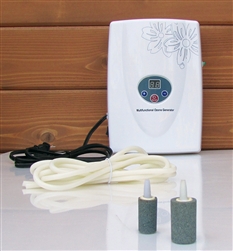Daniel Vinograd: There are different kinds or porcelain in the market. You have E.max porcelain. You have BruxZir crowns. I mean there are just a number of them and different crowns are actually made in different ways.
In our office, what we’re starting to use a lot more is called the BruxZir crown and the BruxZir crown does not have alumina and it’s purely zirconia crown. It has two advantages. One is it’s very strong so you’re going to actually not have – you don’t have to be as aggressive reducing your tooth and number two, they’re incredibly durable. You can take a hammer to them. They won’t break. So BruxZir crowns in my opinion is the new – really the new paradigm.
How long should they last? That was the question? You’re talking about porcelain only or porcelain fused to metal?
Participant: Porcelain.
Daniel Vinograd: Only. It just really depends on how meticulous that crown was constructed. It’s like everything else. You could say how much should this carpentry job last me. It really depends on how meticulous your dentist was in preparing your crown, how meticulous your lab was and make sure there are no impurities in there.
As an average, a crown, just a general crown in the US lasts between five and seven years. My expectations are a lot higher. I don’t want to live by averages and we have crowns in the mouth that have been there for 20, 25, 30 years.
Porcelain only, I would say about 20 years is my longest crown right now.
Participant: Will ozone water help root canal teeth, like deep in the canals if there’s an infection or will it only help with surface?
Daniel Vinograd: [0:40:00] Really if you think about what we’re doing is we’re actually taking concentrated O3 and killing the bacteria physically which I think is brilliant. We continue to want to use antibiotics to beat bacteria that are much smarter than we are evolutionary-wise and keep on beating us biochemically.
So there are ways that we could use other methods and in this case, we’re using just the physical attack on the bacteria. So you do really need the contact. You need the oxygen to actually kill the bacteria.
Really in order for that to be the case, you would have to actually open the root canal and really infuse the water into the canal itself. So if you have a root canal that will not work.
Participant: Doctor, along those lines of root canals, when do we have to get a root canal extracted? When do we have a risk of – even if it looks good, the tooth, should we get it extracted or not? Thank you.
Daniel Vinograd: That is really the biggest conflict I have in my practice. I usually will assess a patient, their general health and the situation of that particular tooth. If you have a patient that that’s the only tooth that they have in the back and their health is relatively good, I will consider not extracting it only because – what are the options? Put them on a partial. It really decreases the quality of your life. It accepts your health in other ways.
Implants, we’re talking about in – everybody is crazy about implants and I do a limited amount of implants in my practice but you’re really inserting a piece of metal titanium into your bone. So all the people that are crazy about doing implants right now and are doing them in every case, not necessarily in my opinion is the best for your health.
Otherwise, if the root canal was done – we have now materials where you can actually do root canals in a much more biocompatible way and when I really have to, there’s a tooth that I need to save, I will do a biocompatible root canal on that tooth which implies using materials that no longer shrink, that actually seal properly and that we don’t have the actual large number of bacteria that were actually being lodged in the canals.
Having said that, I would always prefer not to have root canals and not to have root canal teeth in my mouth. So if they’re not strategic, I often will – and the patient has some health issues, I will recommend extracting it and replacing it maybe with an all-porcelain bridge.
The old root canals, they all basically have been done with fairly toxic materials and materials that actually shrink. They use Gutta-percha which is a physical – it’s basically a rubber and they are actually sealing the canals with a combination of rubber and some kind of a paste, a seal-in paste which all the time is fairly toxic.
So that’s probably one of the most difficult things I have to live with everyday.
Participant: [0:42:29] [Inaudible]
Facilitator: Let’s repeat that question so everybody can hear it.
Daniel Vinograd: Absolutely. We’re being asked if the procedures that are done by biocompatible [Indiscernible] covered by insurance.
I would say most of the biocompatible, we don’t do that in our office, but most biocompatible dentists have additional fees for oxygen, the rubber dam, et cetera. All the things that need to be done around this.
The actual restoration is no different than non-biological dentists would do. So the insurance company will cover that part or whatever part of your work.
Gerson Institute Day 3 Lecture: Dr. Vinograd, Holistic Dental Health,

 Currently, I know that a number of you have been looking for ozonizers in order to follow my protocol (for prevention of gum disease). They can be found here:
Currently, I know that a number of you have been looking for ozonizers in order to follow my protocol (for prevention of gum disease). They can be found here: 
